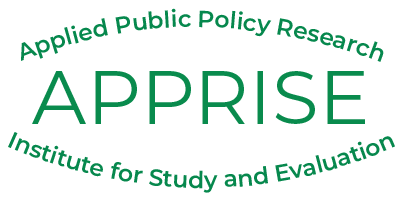Non-Energy Impact Analysis
APPRISE utilizes an array of research and analysis methods to analyze and monetize these impacts.
Non-Energy Impact Analysis Activities
Surveys: Interviews with program participants before and after service delivery to assess how the program has impacted the home in ways other than energy usage.
Measurement: On-site measurement of indoor environmental quality parameters including carbon monoxide, radon, formaldehyde, temperature and humidity, and moisture.
Modeling: Use of energy savings results to estimate the reduction in greenhouse gases, sulfur dioxide, nitrogen oxide, fine particulate matter, and volatile organic compounds.
Economic Impacts Analysis: Analysis of a program’s impact on the economic activity in the state, region, or other geographic area.
Billing Analysis: Analysis of usage or transactions data to estimate the reduction in energy costs as a result of program services.
APPRISE Non-Energy Impact Analysis Projects
Below we provide examples of our projects that included non-energy impact analysis. Click the tabs below to learn more about these projects. For a full list of projects in this topic area click here.
APPRISE conducted research for the Connecticut Energy Efficiency Board to explore existing NEI values nationally, regionally, and for CT; gaps in existing CT NEI data; and survey research and data analysis that can address NEI measurement. The research included implementation of a program participant survey for one priority program or measure. The study explored and assessed the current state of the art for measuring NEIs both nationally and regionally, where and how NEIs are used in calculating the cost-effectiveness of energy efficiency programs, how the inclusion of NEIs has impacted energy efficiency programs across the U.S., the best available estimates of the NEIs for CT programs and measures, and how NEIs could be measured and incorporated in future CT evaluations.
New Jersey Natural Gas operates energy efficiency programs that are complementary to the New Jersey Clean Energy Programs (NJCEP) as the SAVEGREEN project. The residential program provides grants or on-bill repayment plans to assist with the purchase and installation of furnaces/boilers and water heaters. The commercial program provides NJCEP Direct Install participants with a no-interest on-bill repayment plan for the value of the project not covered by the NJCEP incentive. APPRISE conducted an evaluation of the SAVEGREEN project to assess program management, analyze the incremental impact on energy efficiency activity, determine the extent to which the program influences residential customer implementation of whole house improvements, measure the program’s energy savings, and measure the non-energy impacts of the programs.
APPRISE conducted a study on the non-energy benefits (NEBs) of the Energy Savings Assistance (ESA) Program. The ESA Program provides no-cost weatherization and energy efficiency measures to achieve energy savings and improved health, comfort and safety for low-income households served by the IOUs in CA. This study reviewed the NEBs proposed in a previous study and developed a streamlined model for estimating the value of the NEBs.
APPRISE conducted an evaluation of the Illinois Solar for All Program which brings photovoltaic power to low-income and environmental justice communities throughout Illinois and creates a long-term, low-income solar marketplace.
The ILSFA Program has four key components.
- Low-Income Distributed Generation: Single- and multi-family residential properties occupied by low-income households can receive incentives for new solar generation systems.
- Low-Income Community Solar: Low-income owners and renters can buy or lease a share of the solar system and receive credits on their utility bills for the energy produced by their share of the system.
- Incentives for Non-Profits and Public Facilities: Non-profit organizations and public entities within environmental justice communities or low-income communities can receive incentives for new solar generation systems.
- Low-Income Community Solar Pilot Projects: Projects with community partnerships and ownership will be awarded based on a competitive procurement approach.
The evaluation included analysis of community outreach, system cost and production, environmental and economic benefits, impacts on participants’ energy costs and burden, job training, and system reliability.
Energy efficiency programs have significant impacts in addition to the energy savings they achieve, including economic, environmental, and participant impacts. The Non-Energy Impact (NEI) literature extends back for a few decades, but there are many challenges with the research. While there are hundreds of reports that cover NEIs from energy efficiency programs, many are dated and most do not calculate benefits that are specific to the program and jurisdiction studied. This study aimed to overcome several of these issues by conducting a survey with participants in the program studied; performing rigorous sample design, implementation, weighting, and analysis; obtaining high survey response rates; and providing transparency regarding methods, potential issues, and limitations. The study focused on five specific participant NEIs achieved through one market rate and one low-income energy efficiency program. The winter comfort, summer comfort, health, safety, and noise impacts were measured through three different survey-based approaches, results across approaches were compared, and recommendations were made with respect to the preferred methodology and additional research that is needed.
